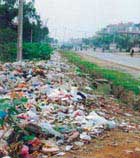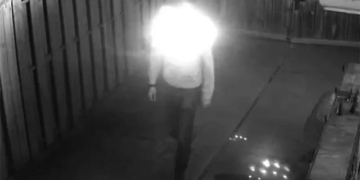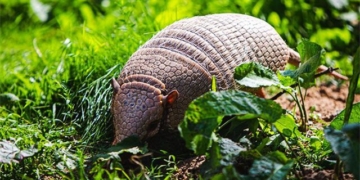The organic fertilizer product is synthesized from waste sludge from ponds, lakes, and ditches in the craft village, widely used by farmers in the region and some neighboring provinces such as Hoa Binh, Vinh Phuc, Nam Dinh, Ha Nam, Yen Bai, and Son La.  This product was awarded the KaWai Prize (a business idea award) by the World Bank in collaboration with the Ministry of Natural Resources and Environment on the occasion of Vietnam Innovation Day and also won second prize at the first Agricultural Technical Innovation Contest held in October 2005.
This product was awarded the KaWai Prize (a business idea award) by the World Bank in collaboration with the Ministry of Natural Resources and Environment on the occasion of Vietnam Innovation Day and also won second prize at the first Agricultural Technical Innovation Contest held in October 2005.
The creator of this product is Mr. Nguyen Phi Sinh, from Team 4, Duong Lieu Commune, Hoai Duc, Ha Tay.
The processing of cassava starch and ginger has significantly improved the lives of the local people, but it has also led to serious pollution in the craft village, with surrounding vegetation becoming barren and dying in droves. The wastewater flowing into the fields causes the rice to be stunted, resulting in low yields.
With the thought of finding a way to utilize waste and contribute to environmental cleanliness, Mr. Sinh had been pondering this for a long time. His “scientific research project” began quite by accident. After each rainstorm, he often observed that the plants would sprout new growth. He investigated and discovered that the diluted acid and nitrogen levels in the rainwater were revitalizing the plants.
Every day, from early morning, villagers would see him in his soiled work clothes, busily digging up the foul-smelling waste from ponds, fields, and ditches, spreading it out to dry. Then, he meticulously removed impurities by hand and loaded the cleaned material onto his vehicle to take home.
Some even thought he was mentally ill. However, he pointed to the containers of thick sludge lined up in his production area and unabashedly stated, “That’s where the millions come from.”
The dirty sludge accumulated over time from the village’s waste is collected by him from ponds, lakes, and ditches. He then presses out the water, dries it, grinds it finely with powdered lime to neutralize acidity, mixes it with peat, inoculates it with microorganisms, and uses EM products to eliminate odors. Once the technology was fundamentally completed, he began trial applications on plants in his home garden and family farming area, achieving unexpectedly high results.
Mr. Sinh shared that in 1996, he boldly borrowed 60 million VND from the bank to invest in production. However, he could not penetrate the market due to a limited product range and a lack of marketing focus. Thus, after two years, the family was unable to repay, leading to the bank sealing their home. All that was left for his family was a mere 10 square meters of makeshift kitchen space. They had to defer the school fees for their four children to their teachers many times.
Failure and hardship did not discourage him. The cramped conditions and shortages did not affect his will and determination to research. Every day he focused on technical work, while his wife and children helped with drying and grinding the waste. After completing the final product, he visited each farming household in the area to encourage them to try his product for plant care.
Starting by giving away samples, he eventually transitioned to selling on credit. His organic fertilizer gained the trust of the community for its high-quality yields, comparable to those of commercial fertilizers available on the market.
“Good news travels fast,” and surrounding farmers began to visit, placing increasingly large orders. Two years later, he had enough money to repay the bank loan and reclaim his house. Now, he has established the Trường Sinh organic fertilizer production facility, where he serves as the director. Each year, he produces 1,400 tons at a price of 900 VND/kg, significantly lower than similar products on the market. Nearly 20 workers participate in production, earning 700,000 VND per month.
Thanks to this success, the waste issue from the craft village has been resolved, eliminating the foul odors emanating from ponds and ditches. The organic fertilizer utilizes 70% of the waste, with the remaining 30% being other additives, thus effectively improving soil quality. Mr. Sinh noted that in the future, his production facility will introduce new fertilizer products for dry hilly areas, designed for clean vegetables and slow-release fertilizers meant for a single crop cycle.




















































